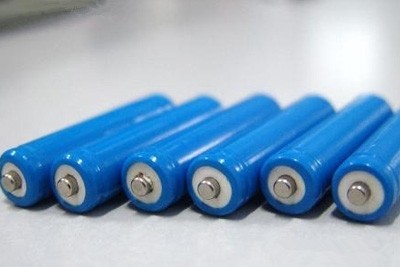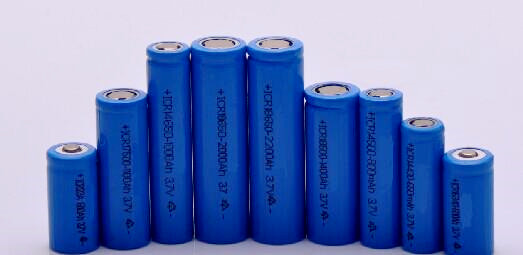Can you fly with lithium batteries?
May 22, 2019 Pageview:1797
You often hear about people having problems with airport authorities owing to the stuff they are carrying. To avoid getting in trouble, it is advisable to make sure that your belongings are in line with the rules laid by the TSA. One of the many things that often pose issues is batteries. Are you allowed to take them with you during the flight? What do the rules state? What if you are on a professional trip and you need to have spare lithium batteries with you? Let us tackle some of these questions.

TSA battery rules in 2019
As per the provisions of TSA, you can carry batteries between the powers of 100 to 160Wh in checked-in baggage. You can also bring about two spare batteries within the same limits in carry-on luggage. However, some conditions apply.
The spare lithium batteries can only be carried in carry-on baggage. Thus, you cannot put the uninstalled cells in your checked-in luggage. When your carry-on bag is being checked in at the gate, you need to remove all the spare lithium batteries from the bag and place them in the aircraft cabin. It needs to be ensured that the terminals of the cells are protected against short circuit.
This rule is applied for all spare rechargeable lithium-ionized and lithium metal batteries that are used in personal electronics such as laptops, cameras, tablets and watches among other things.
Size: the weight of a non-rechargeable lithium metal battery cannot exceed 2g. The rechargeable lithium-ion batteries cannot exceed the rating of 100Wh in a single cell. These limits ensure that the lithium batteries that are present in electronic devices can be carried with ease. The approval of airline is required if a passenger wants to take a couple of larger lithium-ion batteries with rating up to 1010-160 Wh.
Quantity: usually, most batteries do not have any limitations with regards to the size. However, carrying batteries for sales or distribution is not allowed. For larger lithium-ion batteries, two is the limit.
The batteries you carry need to be protected from damage. For instance, it is vital to make sure that the terminals do not come in contact with other metal thereby preventing short circuit. For this, you can leave them in their packaging, cover them with tape or make use of a battery case.
The lithium batteries that are recalled by the vendor cannot be carried in the aircraft. The same goes for the battery-powered devices that are recalled owing to safety concerns.
If there is no watt-hour or Wh. rating marked on your lithium battery; you can simply multiply the voltage of the battery with the Amp hours.

TSA cordless drill introduction
Drills and drill bits can be carried in checked in baggage. However, you cannot keep them in your hand luggage much like other sharp objects such as saw blades.
The battery of the cordless drill has to be removed and stored separately. If your drill operates via standard batteries, you would not be allowed to keep any spare ones with you.
On domestic flights, you can keep the bits of the drill with you as long as they are safely wrapped and are not dangerous. However, most bits of the cordless have to be checked in, and therefore, it is advisable to wrap them all together and keep them in your checked-in luggage. International flights do not allow you to keep any bits with you.
The adapters of the drill have to be stored in stow-away luggage. This is because most adapters can be used as a potential weapon and thus are dangerous. Therefore, you are not allowed to keep them in your carry-on baggage.

Can you take power tools on a plane 2019?
The basic rule that needs to be remembered when it comes to flying with power tools is that they need to be kept in the checked-in luggage. You cannot keep them in your carry-on baggage.
You need to make sure that all the battery-powered tools do not activate accidentally. Thus, it is advisable to remove their batteries before you keep them in your checked-in luggage. The batteries can be placed in the carry-on bag.
You cannot fly with engine-powered tools such as trimmers, generators or chainsaws if there is any fuel in them. If the tools even contain fuel in the form of residual vapors, you will not be able to fly with them. This holds true for both carry-on and checked-in luggage.
If the equipment is entirely devoid of fuel, it is allowed as per rules that you carry it in the checked-in luggage. However, the airlines have the authority to refuse to take it if the equipment ever had fuel in it in the past. If the tool is new and has never been used or fueled, you can check it in without any problems.
Tools that are longer than seven inches need to be checked in. Screwdriver is an example of such a tool which if longer than 7 inches from end to end has to be checked in.
However, it is recommended that you keep all the tools in checked-in luggage. This is because it is the security screening official who has the final say about whether you can keep a particular item in the carry-on or not. Therefore, it is better to avoid trouble and keep all the tools in your checked-in luggage.
If for some reason, you need to take your tools into the cabin, there are some which are allowed as per the guidelines laid out by TSA. These include multi-tool without blades, pliers, wrenches and screwdrivers. Keep in mind that none of these tools can be longer than 7 inches.
Scissors can be kept in carry-on luggage provided that they are less than four inches long from the pivot point.
International flights require you to deal with customs. Bags containing the tools are thoroughly checked. If the security official feels that any of the tools are dangerous, he can confiscate it.
- Prev Article: Where can I buy 18650 batteries?
- Next Article: How Many Cells Are In A Lithium Battery?
Leave Message
Hottest Categories
-
Hottest Industry News
-
Latest Industry News









